Strawberry Varieties & Care
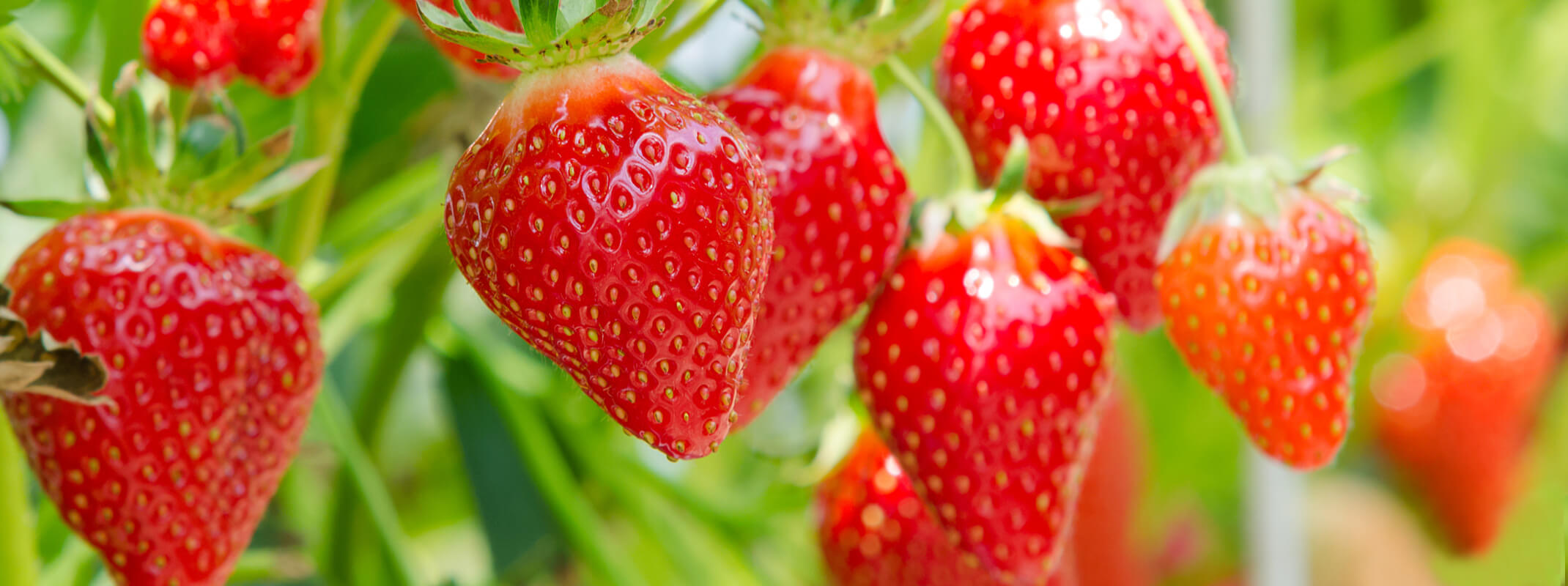 Grow Bushels of Berries - Strawberries
Grow Bushels of Berries - Strawberries
Sweet, juicy strawberries are treats when right from the plant. Supermarket berries tend to be tart with grainy texture; this is because the natural sugar in the berries begins converting to starch as soon as it is plucked from the plant. It’s definitely worth your while to try growing strawberries, and the good news is that they are easy to grow if you have full sun.
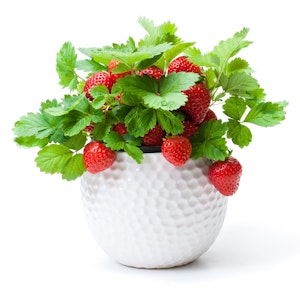
Quinault Strawberry (Ever-Bearing)
These are the most popular of the ever-bearing strawberries. They produce large, soft and more importantly, deliciously sweet fruit. Quinault strawberries are perfect for home gardens, raised beds, and containers. Produces fruit from late spring through fall.
Sequoia (June-Bearing)
These strawberries produce fruit from late spring through Autumn. The berries start out firm but soften as they enlarge. The rather large, dark red fruit are simply tasty. Resistant to powdery mildew. Sequoia strawberry plants are widely adapted and recommended for California gardens.
Albion Strawberry (Ever-Bearing)
The perfect dessert strawberry due to its high sugar content! Bursting with sweetness, this newer ever-bearing selection is distinguished by its conical, symmetrically shaped fruit with firm texture and superior flavor. Albion is high yielding, tolerates heat and humidity, and has excellent disease resistance. May remain evergreen in frost-free areas.
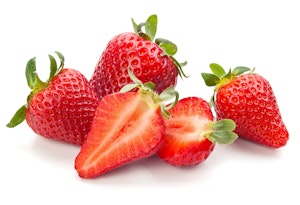
Seascape Strawberries (Ever-Bearing)
Enjoy delicious, bright red strawberries in spring, summer and fall. They produce an abundance of sweet, juicy berries. Seascape strawberries are heat-tolerant and disease resistant.
Alpine Strawberries (Ever-Bearing)
These little berries are easy to grow but only ripen a few berries at a time. However, the berries that you will yield have a delectably intense, wild strawberry flavor.
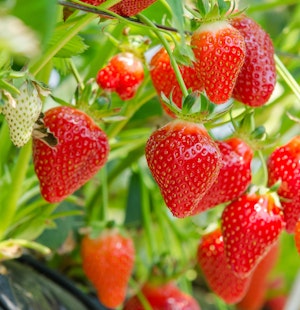
Tristar Strawberries (Ever-Bearing)
This popular ever-bearing variety yields a consistent crop of firm, sweetly aromatic, large, glossy red berries with excellent flavor. Tristar is day neutral and will bear fruit from summer to fall. May remain evergreen in frost-free areas.
San Andreas Strawberries (Ever-Bearing)
Expect dependably high quality fruit early in the season from this moderate day-neutral variety that will produce a continuous yield throughout the summer. Large berries have an exceptional appearance and flavor. Excellent overall disease resistance. Low chill requirement is perfect for warmer regions. May remain evergreen in frost-free areas.
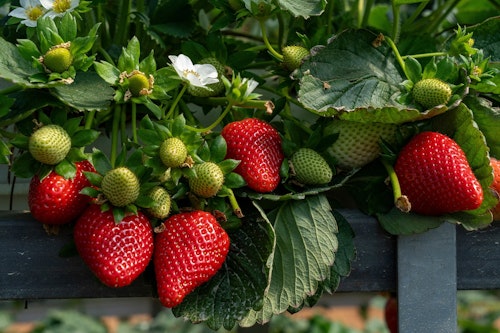
June-Bearing and Ever-Bearing Strawberries
The two main hybrid varieties are called June-Bearing and Ever-Bearing, although alternate names exist. Your garden responsibilities and expectations vary depending upon which type grows in your garden.
- June-bearing, also called summer strawberries have a reputation of producing the highest quality strawberry.
- Strawberries that produce fruit primarily in early summer through fall with peak production in summer, are typically ever-bearing strawberries. Ever-bearing varieties also are termed fall-bearing and day-neutral strawberries.
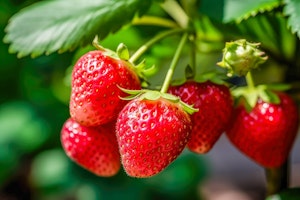
- June-bearing varieties form buds during autumn as the daylight hours grow fewer and the weather turns cool. The dormant buds stay on the plants all winter and flower in late spring. Ever-bearing berries produce flowers and fruit for 3 or more months. Ever-bearing berries do not require short sunlight days or cool weather to form buds.
- June-bearers are planted in rows, allowing the plants' fast-growing runners to spread out and form mats between the rows. Ever-bearing berries should be planted in mounded hills.

Planting and Caring For Your Strawberries
Don't expect to feed the neighborhood your first year as a strawberry farmer. Neither June-Bearing nor Ever-Bearing berries form much fruit when first planted. You are better off pinching off all first-year flowers to strengthen your plants for the following years.
- The Why: Strawberry plants decrease in vigor after a few years, and they are susceptible to diseases, so it's best to start with fresh strawberry plants from SummerWinds rather that “hand-me-downs.” In fact, your whole bed should be replaced every four or five years. We recommend working a few new plants in each year so that when your strawberry plants have established and are fruiting, it's time to incorporate new. This will ensure the best tasting berries year after year.
- The Where: No matter what type of strawberry you grow, choose a sunny, well-drained site, and dig in compost and an all-purpose organic fertilizer. While this may seem like an odd choice, we recommend E.B. Stone Organics Citrus and Fruit Tree Food. The 7-3-3 mixture and ingredients are just what your berries need.
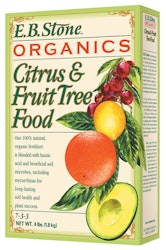 Spade soil to a depth of 8-10 inches, working in plenty of compost or well-rotted manure.
Spade soil to a depth of 8-10 inches, working in plenty of compost or well-rotted manure. - The How: Plant June-Bearers in early spring in rows 4 feet apart, setting the plants 2 feet apart. The mother plants make plantlets that will hop around on runners and root. These will fill the rows and create a mat—let them fill up a 2-foot-wide space, keeping room between the rows for access. For Ever-Bearing and day-neutral types, clip off those runners and only maintain the original plants.
- The End: After harvest, prune away old, faded foliage; leave crown and new foliage intact to allow sunlight into the center of the plant. Apply fertilizer in early spring and again in midsummer.
The Berry Best Gardening Essentials…
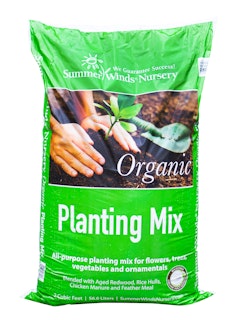
SummerWinds Planting Mix
2 cu ft. Bag | Organic, All-purpose planting mix for flowers, trees, vegetables and ornamentals.
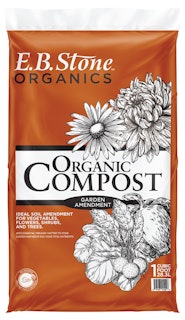
Organic Compost
E.B. Stone Organics - This organic compost is an invaluable addition to any garden. Composts and the organic matter they contain are the foundation of rich garden soils and a key component of successful organic gardens of all kinds.
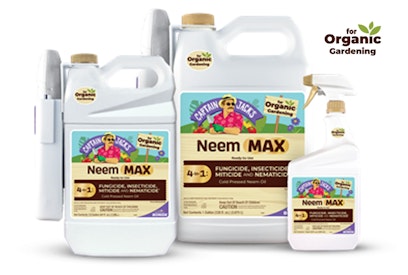
Bonide Neem Oil
An all purpose insecticide, miticide, fungicide for organic gardening. Derived from the neem seed. Use on roses, flowers, vegetables, herbs, spices, houseplants, trees, turf and shrubs. Kills all stages of insects - eggs, larvae and adults. Makes a great dormant spray.

